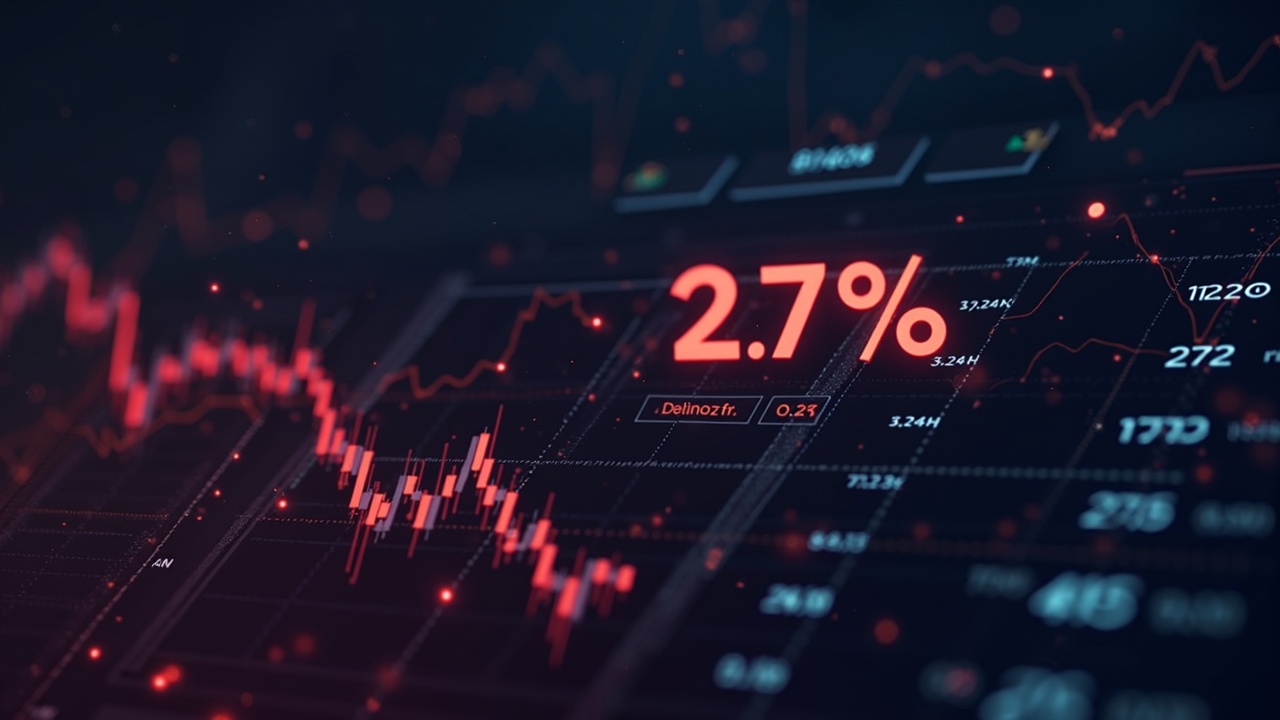On November 19, 2025, the cryptocurrency market experienced a significant and broad-based decline, with major digital assets recording substantial losses amid a sharp shift in investor risk appetite driven by changing expectations for U.S. Federal Reserve policy.
A Widespread Market Downturn
The sell-off was notable for its breadth, impacting nearly every major cryptocurrency. This widespread nature points to a systemic, macro-driven event rather than issues with any single project.
Leading the decline, Bitcoin (BTC) briefly fell below the $90,000 mark, a key psychological level, before paring some losses to trade around $93,000. This pushed the world’s largest cryptocurrency into a bear market, down nearly 30% from its October peak and erasing all its gains for the year. The scale of the drop is stark; Bitcoin has shed over $600 billion in market value since its high, with the total crypto market capitalization losing over $1.2 trillion in just six weeks.
Ethereum (ETH) mirrored this downward trajectory, dropping approximately 6% and struggling to hold above the $3,000 support level. The asset confirmed a bearish “death cross” pattern on its charts, signaling deteriorating medium-term momentum and adding to the negative technical outlook.
Other major assets faced similar pressure. XRP retreated to around $2.15, with analysis suggesting that a break below the $2.22 support could trigger a steeper decline toward $1.80. Solana (SOL) also saw significant liquidations as part of the broader market deleveraging.
The Macroeconomic Storm
A single, powerful catalyst was at the heart of this market-wide retreat: a dramatic shift in the outlook for U.S. monetary policy.
Market expectations for an interest rate cut from the Federal Reserve in December plummeted from nearly 90% to around 40-50% by mid-November. When the market perceives a “tighter” Fed, it often leads to a “risk-off” environment where investors sell speculative assets like cryptocurrencies. This shift acted as a powerful headwind, causing capital to rotate out of the crypto sector.
This macro anxiety was compounded by other factors that eroded investor confidence. The aftermath of a prolonged U.S. government shutdown had delayed key economic data, amplifying uncertainty. Furthermore, the market was still feeling the effects of a historic liquidation event on October 10th, which had erased billions in leveraged positions and left a lasting scar on market liquidity and participant psychology.
Market Sentiment and Institutional Behavior
The collective mood of the market reflected the severity of the situation. The Crypto Fear & Greed Index plummeted to extreme lows, hitting a reading of 11—a level not seen since the catastrophic collapse of the Luna project in 2022. Such a reading indicates a state of pure panic and capitulation among investors.
Institutional behavior also played a dual role, both contributing to and responding to the downturn. Data indicated that long-term Bitcoin holders were engaging in profit-taking after the asset’s meteoric rise from $40,000 to over $126,000. Simultaneously, U.S. spot Bitcoin ETFs, which had been a major source of institutional demand, registered massive outflows, with one day seeing $870 million in redemptions. This withdrawal of institutional capital removed a key pillar of support for prices.

Navigating the Path Ahead
For traders and investors, the immediate future hinges on a few critical factors. The primary focus remains on the Federal Reserve’s upcoming decision in December. A surprise rate cut could reignite bullish sentiment, while a continued pause would likely extend the period of pain and uncertainty.
From a technical perspective, the defense of key support levels is crucial. For Bitcoin, holding above $90,000 is critical to prevent a deeper slide toward the $85,000-$87,000 zone. For Ethereum, the battle is to maintain a foothold above $3,000.
Despite the pervasive fear, some analysts view this violent shake-out as a potentially healthy reset within a longer-term bull cycle rather than the start of a new “crypto winter”. The extreme fear and oversold conditions have historically created accumulation opportunities for long-term investors, though the market likely needs time to consolidate before attempting a sustained recovery.


